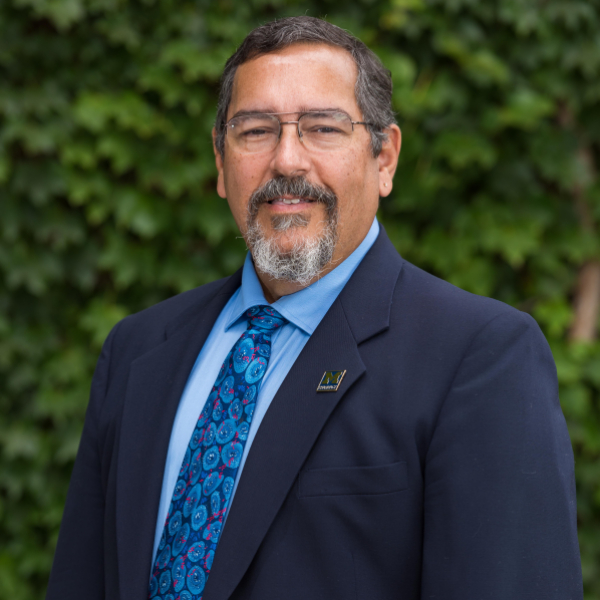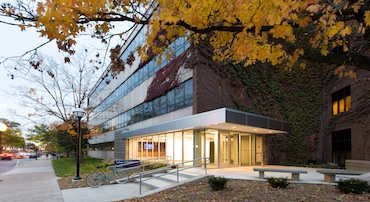Tackling Multidrug-Resistant Tuberculosis

Multidrug-resistant tuberculosis (MDR-TB) is caused by bacteria that do not respond to first-line anti-TB drugs, of which rifampin is the most powerful. Resistance to treatment is a major public health problem that threatens progress made in TB care and management worldwide. According to the World Health Organization, 9 million people fell ill with TB and 1.5 million died from the disease in 2013. The development of drug resistance is attributed to mismanagement or misuse of antibiotics in TB patients and failure to ensure that patients complete the whole course of treatment. Current TB drugs require months of treatment and poor compliance promotes the emergence of drug-resistant strains.
George A. Garcia, PhD, Professor and Chair of Medicinal Chemistry and Director, Interdepartmental Program in Medicinal Chemistry and Pharmacological Sciences Training Program, recognized a critically unmet need for the development of new antibiotics against MDR-TB to overcome resistance to current therapeutics. “We proposed a multi-disciplinary and comprehensive program to develop novel candidates for TB drug development, which will ultimately improve treatment for tuberculosis,” explains Dr. Garcia. “We assembled a team of accomplished and enthusiastic researchers with the necessary diverse and complementary expertise to conduct this research.”
Dr. Garcia and collaborators’ efforts have resulted in a $2.9 million grant from the National Institutes of Health (NIH). At the University of Michgan College of Pharmacy, the research team includes Hollis Showalter, PhD, Research Professor of Medicinal Chemistry and Co-Director of the Vahlteich Medicinal Chemistry Core, and Paul Kirchhoff, PhD, Associate Research Scientist, Vahlteich Medicinal Chemistry Core. Scott Franzblau, PhD, University of Illinois at Chicago, and Katsuhiko Murakami, PhD, Pennsylvania State University, are also key collaborators in the research effort.
Bedaquiline, which affects the proton pump for ATP synthase, is the only new drug with a novel target that has been approved for the treatment of tuberculosis in more than 40 years. The lack of success in inhibiting novel targets suggests that the more effective approach may be revisiting targets of previously effective drugs. Rifampin, currently a frontline treatment for TB, blocks bacterial RNA synthesis by inhibiting bacterial DNA-dependent RNA polymerase. Resistance to rifampin arises from mutations that alter the rifampin binding site on RNA polymerase, resulting in reduced affinity for rifampin.
“We are investigating RNAP because it is a proven, effective target,” notes Dr. Garcia. “We are using two approaches, structure-based and high-throughput screening, in a coordinated drug discovery program. The biochemistry/enzymology studies are conducted in our lab, the synthetic chemistry is carried out in the Showalter lab here at the College of Pharmacy, the structural biology studies are being conducted by Prof. Murakami at Penn State, and Prof. Franzblau at UIC provides the critical test of seeing if our compounds actually kill the tuberculosis bacteria,” continues Dr. Garcia. “Our goal is to develop novel drugs targeting RNA polymerase that avoid deficiencies, such as resistance and side effects.”
The research and development of new medicines is an integral part of a comprehensive TB control plan. September 2014, President Barack Obama announced an executive order aimed at combating antibiotic-resistant bacteria. President Obama cites the rise of antibiotic-resistant bacteria as a serious threat to public health and the economy. Dr. Garcia’s grant is in direct support of this federal initiative to detect, prevent, and control illness and death related to antibiotic-resistant infections. The federal government is advancing this goal by implementing measures that reduce the emergence and spread of antibiotic-resistant bacteria and help ensure the continued availability of effective therapeutics for the treatment of bacterial infections.
“We have assembled a strong team with experience in biochemistry and enzymology of RNA and bacterial RNA polymerase, decades of synthetic medicinal chemistry and molecular modeling in the pharmaceutical industry, groundbreaking structural biology of bacterial RNA polymerase, and internationally-recognized expertise in the microbiology of M. tuberculosis,” asserts Garcia. “We are extremely excited about the considerable success we have had to date. We have proof of concept, a skilled team, and a strong approach to our drug discovery program. It has taken several years of hard work with support from the College of Pharmacy and the Center for the Discovery of New Medicines to get to this point. This grant award from NIH is both a recognition of our efforts and a statement of confidence that we will succeed. We believe that we can discover new compounds with great potential to treat this increasingly problematic health crisis.”



